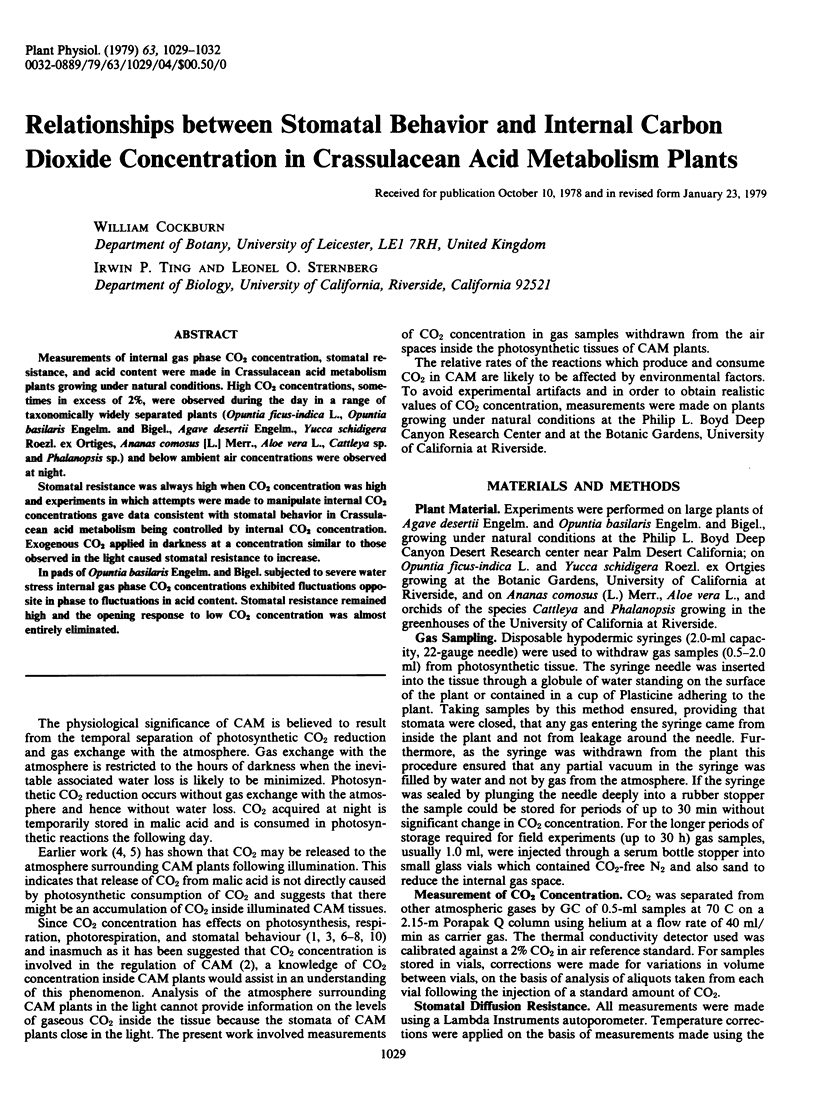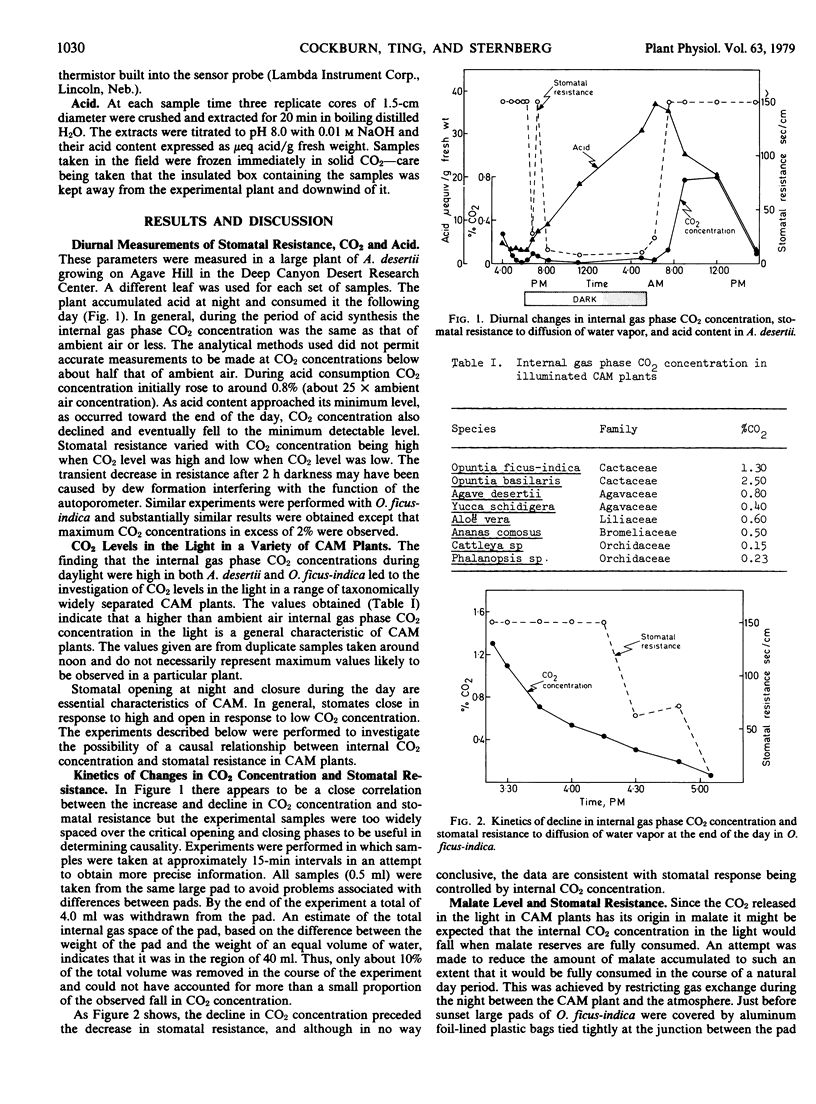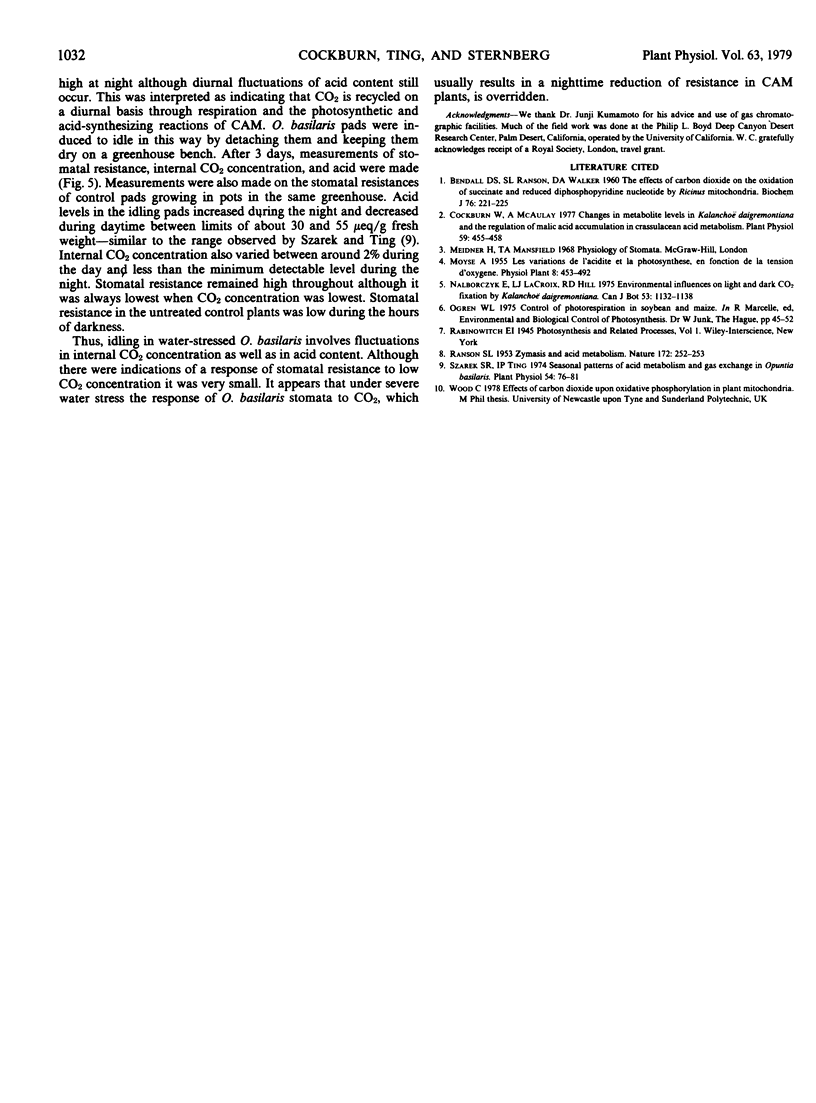Abstract
Measurements of internal gas phase CO2 concentration, stomatal resistance, and acid content were made in Crassulacean acid metabolism plants growing under natural conditions. High CO2 concentrations, sometimes in excess of 2%, were observed during the day in a range of taxonomically widely separated plants (Opuntia ficus-indica L., Opuntia basilaris Engelm. and Bigel., Agave desertii Engelm., Yucca schidigera Roezl. ex Ortiges, Ananas comosus [L.] Merr., Aloe vera L., Cattleya sp. and Phalanopsis sp.) and below ambient air concentrations were observed at night.
Stomatal resistance was always high when CO2 concentration was high and experiments in which attempts were made to manipulate internal CO2 concentrations gave data consistent with stomatal behavior in Crassulacean acid metabolism being controlled by internal CO2 concentration. Exogenous CO2 applied in darkness at a concentration similar to those observed in the light caused stomatal resistance to increase.
In pads of Opuntia basilaris Engelm. and Bigel. subjected to severe water stress internal gas phase CO2 concentrations exhibited fluctuations opposite in phase to fluctuations in acid content. Stomatal resistance remained high and the opening response to low CO2 concentration was almost entirely eliminated.
Full text
PDF



Selected References
These references are in PubMed. This may not be the complete list of references from this article.
- BENDALL D. S., RANSON S. L., WALKER D. A. Effects of carbon dioxide on the oxidation of succinate and reduced diphosphopyridine nucleotide by Ricinus mitochondria. Biochem J. 1960 Aug;76:221–225. doi: 10.1042/bj0760221. [DOI] [PMC free article] [PubMed] [Google Scholar]
- Cockburn W., McAulay A. Changes in Metabolite Levels in Kalanchoë daigremontiana and the Regulation of Malic Acid Accumulation in Crassulacean Acid Metabolism. Plant Physiol. 1977 Mar;59(3):455–458. doi: 10.1104/pp.59.3.455. [DOI] [PMC free article] [PubMed] [Google Scholar]
- RANSON S. L. Zymasis and acid metabolism in higher plants. Nature. 1953 Aug 8;172(4371):252–253. doi: 10.1038/172252a0. [DOI] [PubMed] [Google Scholar]
- Szarek S. R., Ting I. P. Seasonal Patterns of Acid Metabolism and Gas Exchange in Opuntia basilaris. Plant Physiol. 1974 Jul;54(1):76–81. doi: 10.1104/pp.54.1.76. [DOI] [PMC free article] [PubMed] [Google Scholar]


